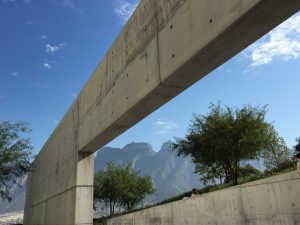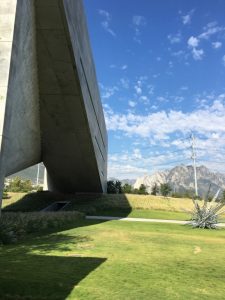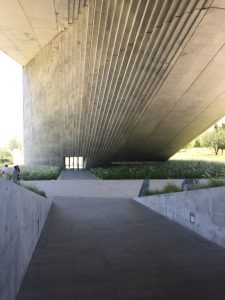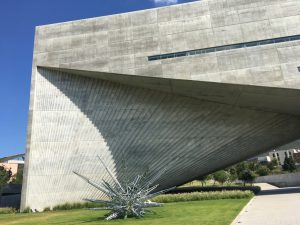As two ardent world travelers, our paths finally crossed in São Paulo and Rio de Janeiro during the summer of 2016. In São Paulo, we were co-speakers at the ABIESV Retail Conference, and in Rio, co-speakers at Casa Brazil. Most recently, we met again in Mexico City at the University of Monterrey for the Association of Latin American Visual Merchandising’s second annual conference. Our friendship and professional collaboration took off from there.
The university’s school of architecture was the venue for the LAVM workshop event attended by visual merchandisers and store designers from across Latin America.
As designers, we recognize that inspiration is everywhere; if you don't see it, just look somewhere else. Travel clearly opens our lens for stimulation, from what’s new and cool to what’s stood the test of time. It also exposes us to new philosophies and approaches, and helps us penetrate below the surface of the mundane.
As design professionals, we were both quite eager to see renowned Japanese architect Tadao Ando’s critically acclaimed “Gate of Creation.” As Monterrey proudly showcases a portfolio of cutting edge modern architecture, we knew that Ando’s contribution to the cityscape would not disappoint. In discussing the nuances of the building, and realizing that we share similar design philosophies and aesthetic sensibilities, we collaborated on this draft of our impressions of Ando’s work.
The building that houses The University of Monterrey’s School of Art, Design and Architecture clearly provides new vistas of inspiration and acts as a catalyst to conceptualization. Aptly named, The Gate of Creation is a metaphor for the entry into an educational odyssey of innovation, creativity and discovery.
Ando’s “creation” represents the confluence of man and nature, and the resultant poetry of concrete and form. The geometries of the architect’s masterpiece place equal importance on positive and negative space. The strategically positioned voids frame the contiguous landscape, allowing for spectacular views of the magnificent Cerro de la Silla and Huasteca Canyon. The building’s triangular openings seem to emphasize the angular boldness of the distant mountains. A series of narrow windows allow wind and natural light to penetrate the edifice.
Advertisement
In concert with nature and the surrounding Monterrey landscape, Ando subtly intertwined Japanese imagery into the design solution with an inclined flat roof, as well as two sloping fan-shaped roofs that cover a gently slanted fan-shaped wall. This nod to traditional Japanese bamboo fans provides a sense of movement to the massive concrete structure. Ando referred to this section of the building as “the sail,” an allusion to a ship navigating the waters of creativity. The building, with a sprinkling of Corbusian influence, is an angular sculpture carved into a striated concrete shell. It offers a new experience with every view, from strategically positioned amphitheaters with breathtaking views to a faculty lounge pocketed beneath the angled wall of the building’s expansive triangular opening.
A master of shape, form and mass, Ando celebrated the link that bonds mankind to nature in a magnificent structure conceived and built to inspire, not only the students at the University of Monterrey, but also anyone who engages the space. What more could a traveling architect from Brazil and a wandering visual merchandiser from New York ask for?
Eric Feigenbaum is a recognized leader in the visual merchandising and store design industries with both domestic and international design experience. He served as corporate director of visual merchandising for Stern’s Department Store, a division of Federated Department Stores, from 1986 to 1995. After Stern’s, he assumed the position of director of visual merchandising for WalkerGroup/CNI, an architectural design firm in New York City. Feigenbaum was also an adjunct professor of Store Design at the Fashion Institute of Technology and formerly served as the chair of the Visual Merchandising Department at LIM College (New York) from 2000 to 2015. In addition to being the Editorial Advisor/New York Editor of VMSD magazine, Eric is also a founding member of PAVE (A Partnership for Planning and Visual Education). Currently, he is also president and director of creative services for his own retail design company, Embrace Design.
Julio Takano is the ceo of Kawahara & Takano Retailing. An architect by trade, Takano has spent 25 years building iconic brands and strategically repositioning retail companies. He is also the author of “KT Retailing Methodology for Business Architecture,” integrating the disciplines of strategic planning, branding, architecture, visual communication, visual merchandising, design of equipment, and staff training. In addition, he is a founding member of ABIESV, The Brazilian Association of Industry Equipment and Services for Retail, and is a counselor at SBVC, Brazilian Consumer Retail Society.
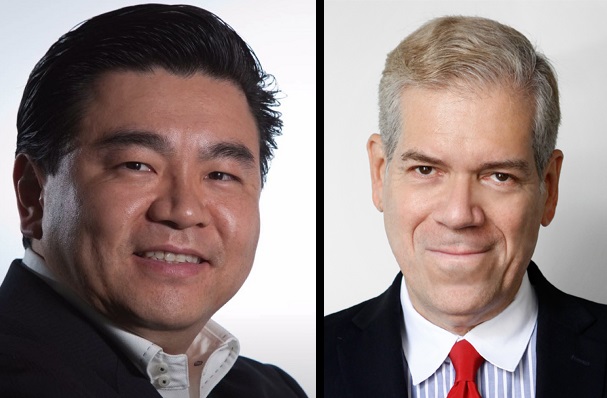

 Photo Gallery1 week ago
Photo Gallery1 week ago
 Headlines1 week ago
Headlines1 week ago
 Headlines2 days ago
Headlines2 days ago
 Headlines1 week ago
Headlines1 week ago
 Headlines2 weeks ago
Headlines2 weeks ago
 Headlines1 week ago
Headlines1 week ago
 Designer Dozen2 weeks ago
Designer Dozen2 weeks ago
 Designer Dozen6 days ago
Designer Dozen6 days ago

